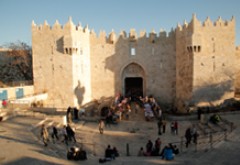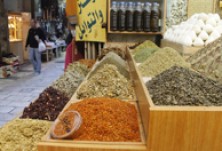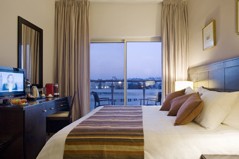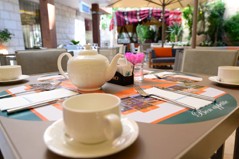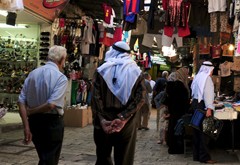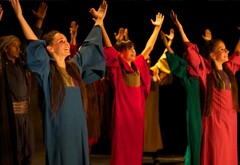Garo Nalbandian was born in the Armenian quarter of the old city of Jerusalem in 1943. He is the son of Armenian refugees who fled the slaughter of Armenians by the Turks, which began in 1915.
Garo started work at the Yergatyam photography studio at the tender age of 13. His job description consisted mainly of cleaning the studio and running errands, but he also took every opportunity to assist the in-house photographers. Despite the growing popularity of photography from the Holy Land and the relatively high wages paid to photographers at the time, Garo did not receive a penny in wages from his boss. Unsatisfied with being treated unfairly, he complained to his father, but his father simply replied that if he had an opportunity to learn about something he liked then things would take care of themselves. Thus Garo paid strict attention to everything that went on in the studio. He taught himself how to process and develop films and how to dismantle all types of cameras. This knowledge finally became of use to him when, in 1957, his boss could no longer afford his in-house photographers and had to trust the eager 14 year-old to take over the residency at the studio. This Garo did satisfactorily but still without pay.
Garo's first break came shortly afterwards when a journalist from the Palestine newspaper called at the studio urgently needing a photographer to cover the arrival, in Jerusalem, of U.N. Secretary General Dag Hammarskjold. Garo naturally picked up his cameras and went to the airport to cover the event. Hammarskjold noticed the young photographer among the press pack. Unable to conceal his interest, the Secretary General approached Garo and asked him what he was doing there and if his pictures would be any good. Garo promised that he would send Hammarskjold a copy of the paper the following day to show him the results. Of the twelve pictures Garo took on that day, eight were published. The publicity that Garo generated as a result of these pictures served the studio well. However, it failed to make an impression on his boss who continued to deny the young photographer any pay.
Garo resigned from studio Yergatyam shortly afterwards and found paid work at another studio, the Roxy, where he met and worked with the prominent Palestinian photographers Ali Zaarur and Hanna Safieh. In 1960, at the age of 17 and with the help of his family, Garo set up his own studio and in 1961 he photographed the visit to the Holy Land of the Russian orthodox patriarch who had arrived from the Soviet Union. He published these pictures in Newsweek and Time magazines. Again, in 1964, Newsweek and Time ran Garo's photographs of the historic visit of Pope Pius XI.
Garo probably has one of the largest individual archives of published photographs on Christian and Islamic ritual in Jerusalem and continues to publish his pictures in numerous books and journals around the world. Aside from being the official photographer for the catholic Custody of the Holy Land, which maintains and runs the church of the Holy Sepulchre, he works closely with the Islamic Wakf or religious authorities in Jerusalem and the department of religious antiquities in Jordan.

